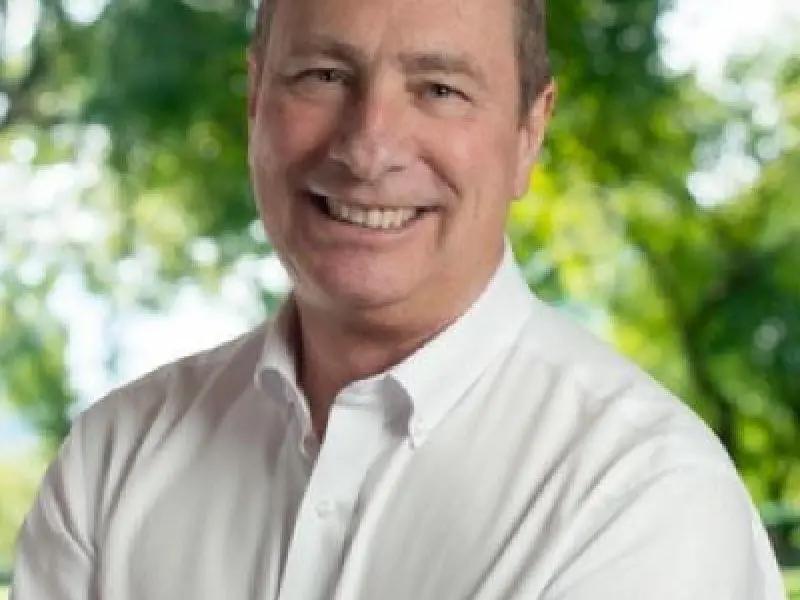
Montreal-based carbon removal company Deep Sky has signed a partnership with Exterra Carbon Solutions for a pilot facility in Quebec to store captured carbon dioxide within the mineral waste from asbestos mining.
The two companies plan to build a pilot facility in Southern Quebec capable of capturing 1,000 tonnes of carbon dioxide per year to test Exterra’s technology ahead of commercial rollout.
“We’re practically neighbours,” Frederic Lalonde, Deep Sky’s co-founder, told SustainableBiz.
Also headquartered in Montreal, Lalonde said Exterra helped solve the biggest problem he identified in carbon capture: where to store billions of tonnes of captured carbon dioxide.
Deep Sky and Exterra can “close the loop” on captured carbon to open the door to massive scale-up, he said.
“We met them and the guys were just brilliant, they’re amazing, and they’re hacking away at this problem, moving rocks away in trucks and crushing it. Most people wouldn’t think it’s sexy, but we were thrilled when we saw that, we thought these guys are just amazing.”
Exterra becomes a part of Deep Sky’s plan to form a network of carbon capture sites across Canada, with its technology partners, to capture carbon dioxide at gigaton-scale. Exterra is Deep Sky’s second publicly announced partner after Captura, a Pasadena, Calif.-based direct ocean capture startup.
How Exterra’s pilot will work
Exterra, created in December 2021, was co-founded by CEO Olivier Dufresne, a former mining engineer and investment banker.
In an interview with SustainableBiz, Dufresne explained Exterra’s process.
Mineral waste with high magnesium or calcium content gets crushed and the magnesium or calcium is dissolved in a solution, where the solids are separated. Carbon dioxide is injected into the magnesium- or calcium-infused solution to form magnesium carbonates or calcium carbonates, trapping the carbon dioxide and creating large-scale sinks. The solids can have their critical minerals and silica extracted for sale.
This acts as a permanent carbon capture method that can last up to a million years, the company says. Quebec’s serpentine mineral waste can sequester up to 300 million tonnes of carbon dioxide, Dufresne added.
Lalonde said Deep Sky chose to partner with Exterra in Quebec because the province offers a surplus of accessible clean electricity and is close to Deep Sky’s planned carbon capture facilities, minimizing emissions when moving the captured carbon.
A bonus in this instance is remediating hazardous asbestos waste.
Dufresne said Exterra was in talks with Deep Sky for five months. The two companies’ capacities lined up “perfectly” in timing and size as Exterra was seeking a carbon dioxide provider, while Deep Sky needed a sequestration partner. He was also impressed with the experience Deep Sky's team has in scaling businesses.
The companies plan to build an end-to-end surface storage pilot project in Southern Quebec approximately the size of a Tesla dealership that will capture 1,000 tonnes of carbon dioxide per year. It is scheduled for completion in the second half of 2024.
Dufresne pegged the pilot’s price tag at $10 million to $15 million, and costs were reduced by using commercialized equipment and pre-existing buildings at a site, he added. Lalonde said funding would come from Deep Sky's $50 million to $70 million funding round which is to be announced in September.
Exterra already holds permits for processing and disposing of mineral waste for the pilot.
Lalonde said the pilot can reveal operational data so Deep Sky can share the findings with the world.
Deep Sky’s model for carbon removal credits
Deep Sky’s next goal is to build a carbon-capture facility in Quebec, dubbed Deep Sky One, that can capture and sequester 250,000 tons of carbon dioxide per year.
From there, it can store the carbon dioxide, turn it into a commodity for trading and sell carbon removal credits.
The market for mechanical carbon removal is growing, with organizations like JPMorgan Chase paying $200 million for carbon removal years in advance, which Lalonde said is a sign people are paying attention to climate concerns and are taking action.
What’s next for Exterra
As for Exterra’s future, Dufresne said his company is exploring the potential to store carbon dioxide in steel slag and other mine tailings. It targets a full-scale carbon capture client by 2027.
Exterra has also just closed a funding round that will be announced in September, Dufresne revealed. The company is also looking to raise a $15 million to $20 million Series A round in 2024 to operate a demonstration facility with Deep Sky and finance a feasibility study for its full-scale project.
Editor's note: It was mistakenly reported Deep Sky will source carbon dioxide from ethanol production in Ontario for the pilot. SustainableBiz regrets the error.










